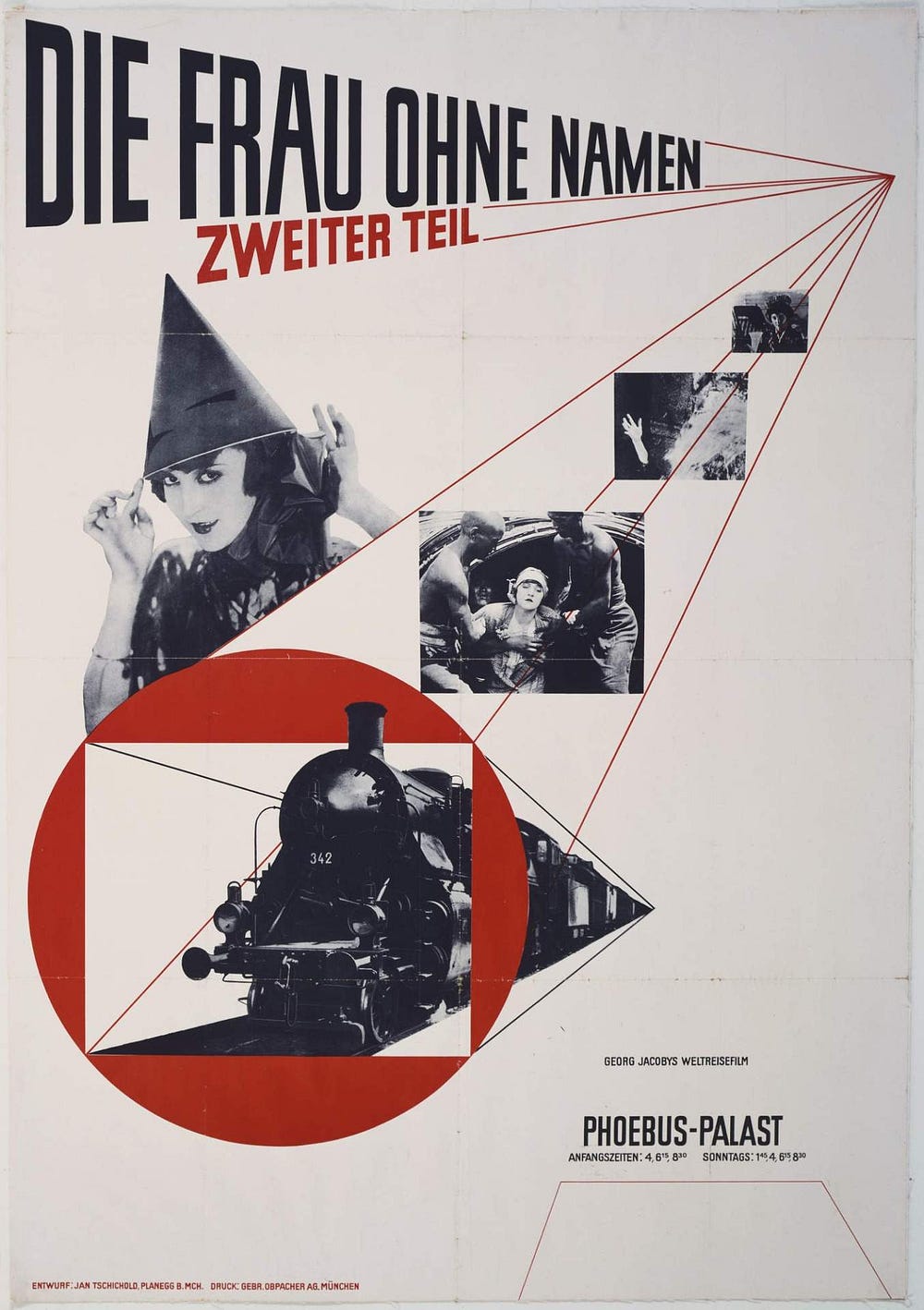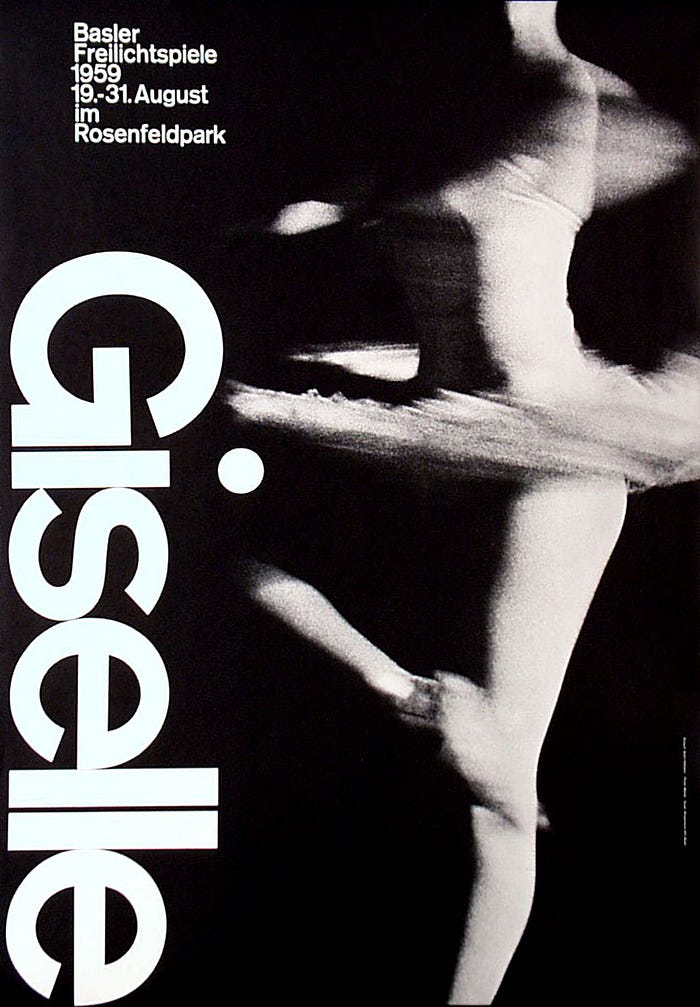The origins of Swiss Design

Swiss design also known as International Typographic Style was founded in Switzerland after the Second World War. The style was influenced by previous design styles before it, these include Constructivism, The Bauhaus and the new typography. Swiss Design comes under the style and ideology of Modernism, Modernism became popular during the 20th Century, but first became noticeable in the late 19th Century in a variety of cultures and art movements. Modernism was a revolt against the values which had been set in place by realism.
Design styles which helped influence Swiss Design
Constructivism was started during the Russian Revolution of 1917 as a way of expression the ideas of many of Russian artists who had supported the revolutions goal. Constructivism was inspired by many other design movements, such as Cubism, Suprematism as well as Futurism. The constructivist themes were often quite minimal, and often the artwork was broken down to the most basic element.

Many of the constructivist design work also combined photography with typography, such as the work titled, Book! (1924) Which was created by Alexander Rodchenko which features a black and white image of a woman shouting Books. The movement came to an end in 1924, with the death of the then leader of Russia Vladimir Lenin and the start of Stalin’s dictatorial rule of the country. Stalin’s supporters called The Stalinists, felt that the styles aesthetics where to rarefied to serve as part of the state propaganda, many artists who worked in the constructivist field left Russia to start new life’s, retiring from public living in fear of what may happen to them, or where approached by the Russian State Police and jailed in Russia’s infamous Gulag. The idea’s and influence’s of constructivism survived the death of Lenin and helped to influence other design movements including Swiss Design.

The Bauhaus
The Bauhaus is another prime example which helped to influence Swiss Design. The Bauhaus was perhaps one of the world’s most famous art schools to ever exist which helped to teach as well as influence many of the world’s best known designers in many disciplines of design, despite being open for a short amount of time (1919–1933). The tutors at The Bauhaus consisted of some of the top designers in their field, Johannes Itten, Paul Keen, Hannes Meyer, Wassily Kandinsky, Herbert Bayer, Marcel Breuer, Laszlo Moholy-Nagy and Mart Stam.
Typography was not initially taught at the Bauhaus but it became more important with key practitioners such as Moholy-Nagy and Herbert Bayer. Typography was seen as both a means of communication as well as an artistic expression, and visual clarity was stressed above all. The Bauhaus came under increasing pressure from the right wing government which was sweeping through Germany. On April 11th 1933, the school was shut down and closed off by armed police, the school closed down as the Nazis believed the school had a secret printing press which they suspected was publishing anti-Nazi propaganda, and documents where found which linked the Bauhaus to the Communist party. Ludwig Mies Van der, who had taken over as head of the school in 1930 when Meyer resigned as director, was arrested by the police and later released but the school never opened again.
Many of the teachers at the Bauhaus emigrated away from Germany with many of them moving to the United Stated. The New Bauhaus was established in Chicago in 1938 by Moholy-Nagy. He was head of the New Bauhaus from its establishment till his death in 1946, the name of the New Bauhaus was changed in 1944 to Institute of Design.

Jan Tschichold
Jan Tschichold was born in 1902, and was the son of a sign painter, Tschichold trained as a calligraphy. Jan was raised in Germany where he worked closely with other type designer such as Paul Renner. When the Nazi party came to power in Germany he fled to Switzerland, his work was deemed a threat against the cultural heritage of Germany, as he was working with Sans-Serif typefaces and Germany traditionally used Blackletter. The Nazi’s seized a large sum of his work before he was able to flee the country. Perhaps his most famous work was the 1928 book The New Typography which also had a large impact on Swiss Design. In the book Tschichold arranged the principles of modernism as they applied in typography, printing as well as graphic-design. His rules became the essence of modernism and where picked up by many different styles throughout the years, they included, asymmetric page organization, the use of photography to replace illustrations, the use of primary colours and the use of sans serif typefaces especially the typeface Futura.

The rules which he set out within the book became a great influence for Switzerland’s designers, when they came up with their own design style. An example of his work titled “Die Frau ohne Namen” (1927) shows his type of style.

Josef Muller-Brockmann
They where many well-known practitioners who worked within the Swiss Design style and each one brought a new idea to the style. Perhaps one of the most recognisable figures is the designer Josef Muller-Brockmann, who is responsible for making the use of grids within design popular. The use of the gird system would become one of the most important principles of Swiss Design. Josef began his long career in design as an apprentice to the designer and advertising consultant Walter Diggelman before he opened up his own studio in 1936 in the Swiss city of Zurich.
By the 1950’s Josef had established himself as one of the leading practitioners and theorist of the newly emerging Swiss Style of design. As well as creating design work Muller-Brockmann was also well-known for teaching design, he taught as well as giving speeches at a number of well-known institutions around the world, these included, Kunstgewebeschule in Zurich from 1957 to 1960, and was also a guest lecturer at the University of Osaka from 1961 and the Hochschule fur Gestaltung, Ulm from 1963.

Armin Hofmann
Armin Hofmann is another well-known Swiss Design practitioner, his work featured the use of sans serif typefaces, grid based design, the use of typography as an essential design element as well as using photography in his work instead of illustrations. By the age of 27 Hofmann had completed an apprenticeship at Lithography and from here began working at the Basel School of Design as a teacher where he stayed for several years. Hofmann spent most of his design career designing posters, one of the clients which he regularly created work for was Basel Stadt Theater, for them he created perhaps one of his most well-known pieces of work titled Giselle(1959), which soon became one of the most recognisable pieces of Swiss Design.
Adrian Frutiger
Adrian Frutiger was another well-known Swiss Designer who is best known for creating typefaces throughout his career, these typefaces include Univers, Frutiger and Avenir. From 1949 to 1951 Frutiger studied at the Kunstgewebeschule in Zurich and in 1952 he began working at the type foundry Deberny & Peignot as an artistic director. In 1960 he set up his own design studio with Andre Gurler and Bruno Pfaffli, his commissions included Logotypes, signage systems and maps for clients such as Air France, IBM and the Swiss Post Office.
One of the core ideas of Swiss design is the use of a grid, this divided the page using mathematical system, and helped to create the controlling grid, therefore helping the designer to understand how to place elements within the page. It is believed that its modern use was used by Herbert Bayer at the Bauhaus, Karl Gerstner explained why Bayer used a grid in his work “as a proportional regulator, for layout, tables, pictures, etc”.
Examples of grid systems can be found throughout the movement and are still used to this day within design, and is one of the most essential things which are taught at design schools. As well as using grid systems within the work Swiss design also used Sans Serif typefaces in the work instead of using Serif typefaces and replaced illustrations with photography. Many ideas which started as part of the Swiss style would later become hugely influential for designers all around the globe, for many decades as well as still impacting on designers to this day.
The influence of Swiss Design on the international community depended heavily on the monthly magazine Graphis, that was published from Zurich since the end of the Second World War. The publication contained discussions of commercial art from abroad as well as fine art print making, limited edition books and also contained historical subjects. Another magazine which helped to publicise the design style was called Neue Grafik (New Graphic Design), the publication was launched by Richard P. Lohse, Joseph Muller-brockmann, Hans Neuburh Carlo Vivarelli in 1958. The magazine published work mainly from Switzerland which meant the publication became an international publishing tool for the new modernist style.
